The weather outside is frightful, but it doesn't need to feel that way indoors. These fixes help keep the cold air outside where it belongs.
10 Simple Ways to Stay Warm This Winter and Lower Utility Bills
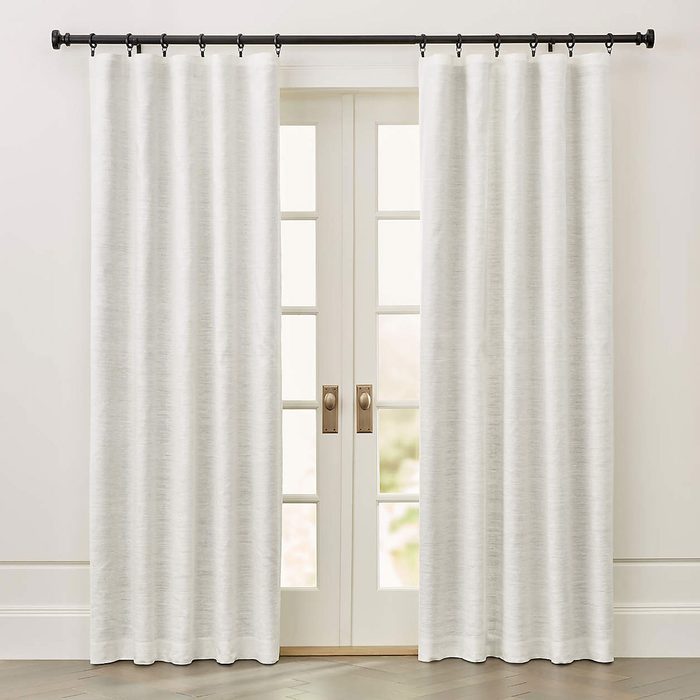
Keep Out the Cold for Comfort and Lower Utility Bills
You could spend another winter feeling chilly inside your home, teeth chattering under a fuzzy fleece blanket. A better option? Spend a little time and money now to fix the things that actually cause your house to feel like the inside of a refrigerator.
Things like drafty windows and doors, exposed exterior crawl space vents or chimneys seem to just invite cold air to seep into your living room, disrupting your Netflix marathon or family game night.
Performing a few keep-the-cold-out tasks will keep you much more comfortable as you wait out the long winter. But that’s not the only benefit. According to the U.S. Department of Energy (DOE), you’re also likely to save a little money because your home will become more energy efficient.
Hang Thermal Curtains
Windows are notorious for allowing cold drafts to enter your home. That’s because glass doesn’t provide much insulation, and window frames and seals tend to wear out over time, letting in cold air.
If new windows aren’t in your budget, try thermal curtains! Unlike standard curtains, thermal curtains contain a thin layer of acrylic foam. This acts as the insulation your windows are missing, keeping you nice and toasty — or at least toastier than you would be otherwise.
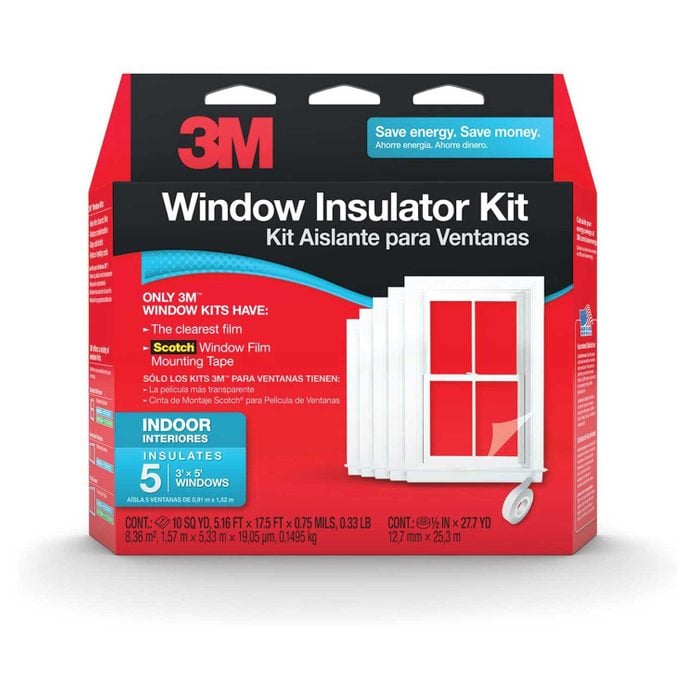
Place Shrink-to-Fit Plastic Over Drafty Windows
Saran Wrap for your windows? Yes! Along with the thermal curtains, placing plastic shrink-wrap over your windows can help keep cold air from trickling into your home.
To find out if this will help, the DOE recommends closing the window in question over a piece of paper. Then check to see if the paper “moves back and forth.” If it does, you may have a leak. But don’t worry, you won’t need to grab a roll of plastic wrap from your kitchen and wing it — a 3M Window Insulator Kit will do the trick. The kits are pretty simple to use, too, especially if you own a hair dryer.
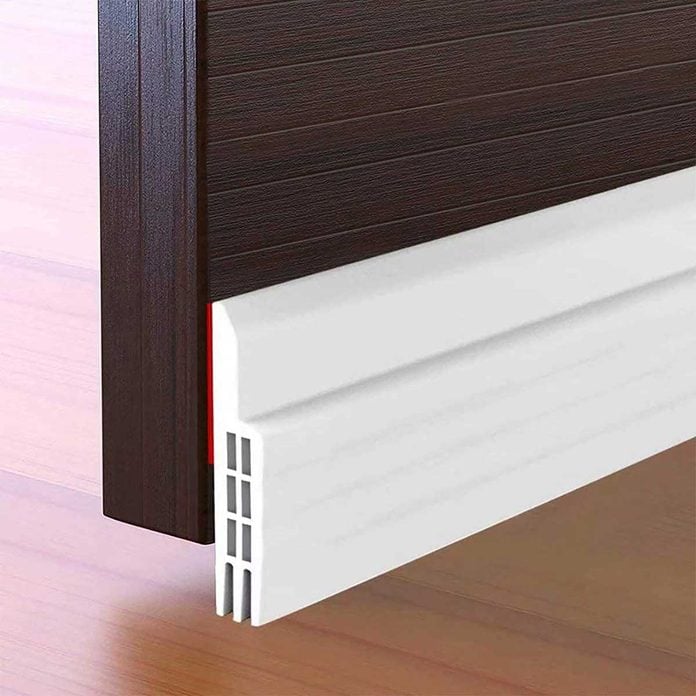
Install a Door Sweep
Do your exterior doors have gaps between the bottom edge and the flooring? If so, door sweeps, a.k.a. bottom-mount weatherstripping, are top priority in your quest to winterize your home. The sweeps, available in three basic varieties (strip, bristle and under-door), seal up that gap so cold air doesn’t seep in. Strip sweeps are particularly easy to install — some are even self-adhesive.
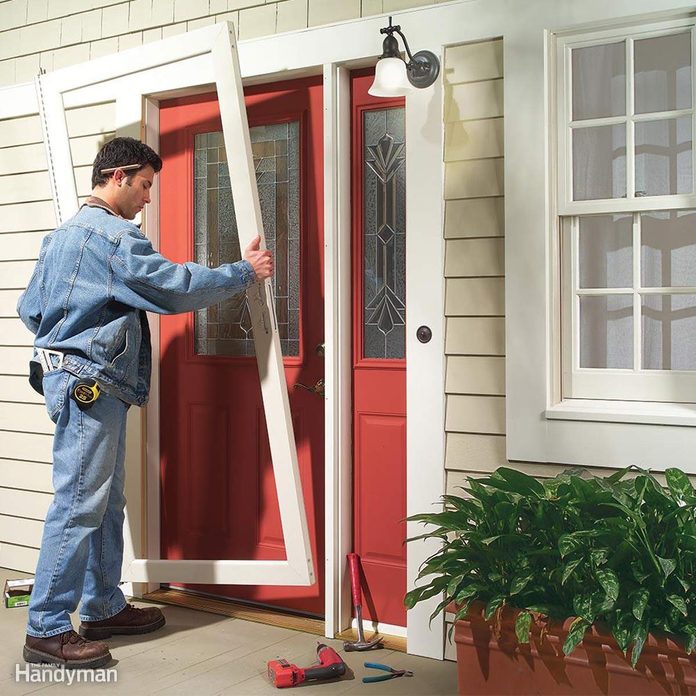
Install Storm Doors
Sometimes a door sweep isn’t enough to keep that unwelcome cold air from entering the house. If you need a heftier solution for your exterior doors, considering installing aluminum, steel or fiberglass storm doors, which provide extra insulation by keeping frigid air outside where it belongs.
Be aware, though, that storm doors aren’t ideal for homes with newer exterior doors. According to the DOE, these doors are typically already well-insulated and energy efficient, so adding a storm door won’t help much. Added bonus: Storm doors are great for the warmer months. Many have vents or windows, so you can open your main door and let in some fresh air.
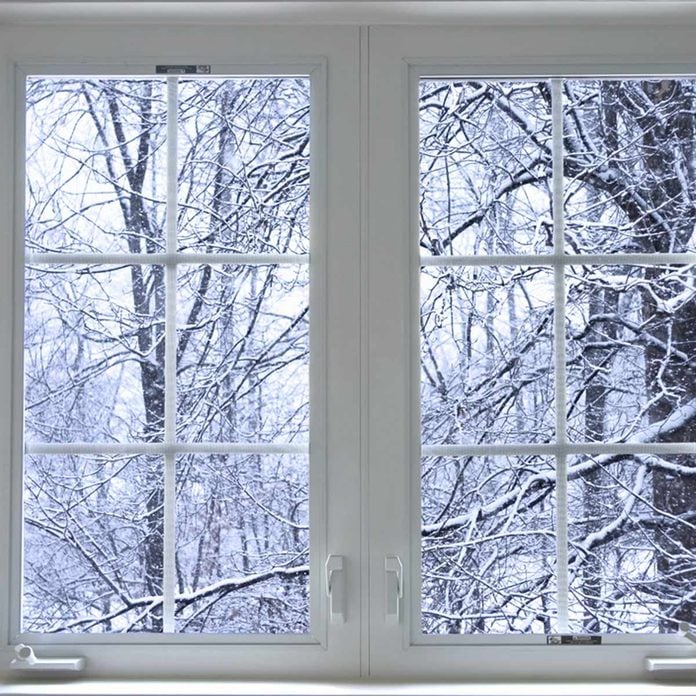
Install Storm Windows
As long as you are installing a storm door, why not do the same for your windows? Not only will storm windows help keep the cold out, the DOE reports that in some cases they even generate as much cost savings as new double-pane windows with high-performance glass. We’ll take that!
Storm windows are available with vinyl, wood or aluminum frames, and glass or plastic panels. Before you shop, decide whether you prefer interior or exterior storm windows. Either is acceptable — it all depends on what you want and what will work with your existing windows.
Storm window inserts are another option. These are popped onto the windows from the inside and removed when spring rolls around.

Place Fabric Draft Stoppers in Front of Exterior Doors
By now you get the picture. Doors (including sliding glass and French doors) are some of the main culprits when it comes to letting cold winter air into your home. Likewise, there are a lot of things you can do to solve that problem.
While some solutions are pricey and/or require some DIY-prowess, we have one that is affordable and super easy — fabric draft stoppers. Sometimes referred to as door snakes, these draft stoppers are filled fabric tubes placed along the bottom edge of a door to keep cold air from seeping in through the gap. If you’re crafty, you might even be able to make your own!
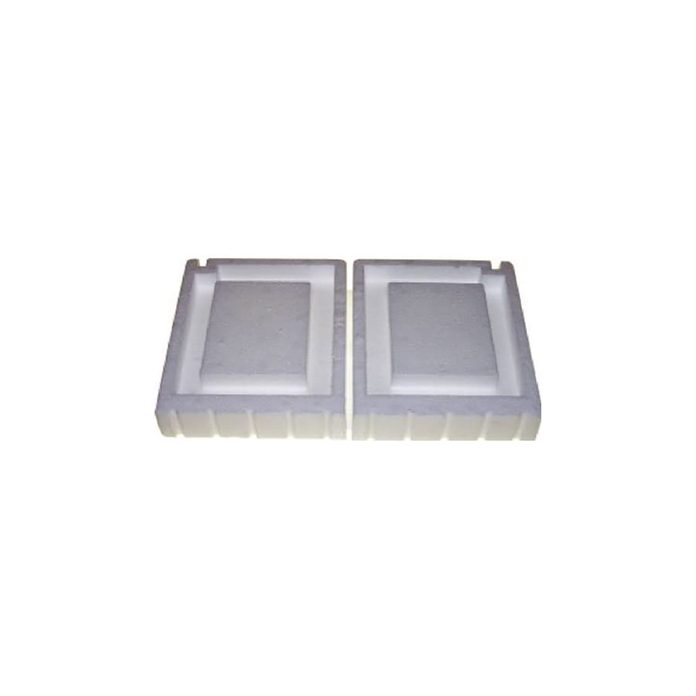
Close Foundation Vents
Homes with crawlspaces are vented along foundation walls to prevent mold and mildew from growing and to keep airflow in check. In the winter, though, these vents make it far too easy for cold air to get into your crawlspace.
You can avoid this by closing your foundation vents with a foam vent plug, which keeps the heat in and the cold air out. We do recommend, however, leaving one or two vents open to keep some air circulating. And be sure to remove the vent plugs as soon as outdoor temperatures start to rise.
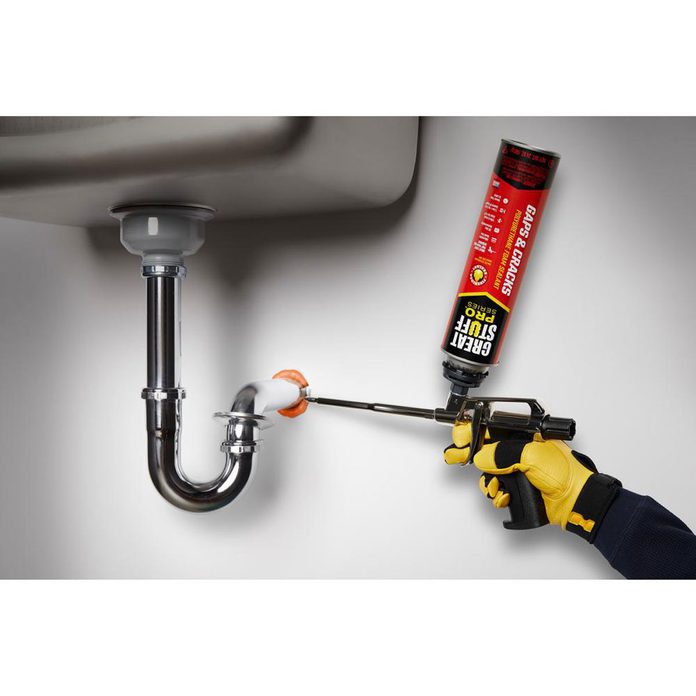
Fill Holes and Gaps With Foam Sealant
You probably don’t think about the under-sink pipes in your bathroom or kitchen very often, unless a problem comes up. But the gaps around these pipes can let in quite a bit of cold air. You’ll know there’s an issue if the gap is visible and/or you can fit your finger between the pipe and the wall.
The most straightforward way to seal these gaps? Spray-in polyurethane foam sealant. You simply spray, let it expand to fit the gap, and you’re done. Be sure to pick up a compatible dispensing gun along with your sealant. Also, read the labels. There are many types of spray-in sealants and insulation, and it’s imperative you use the right one the correct way for safety and efficacy.
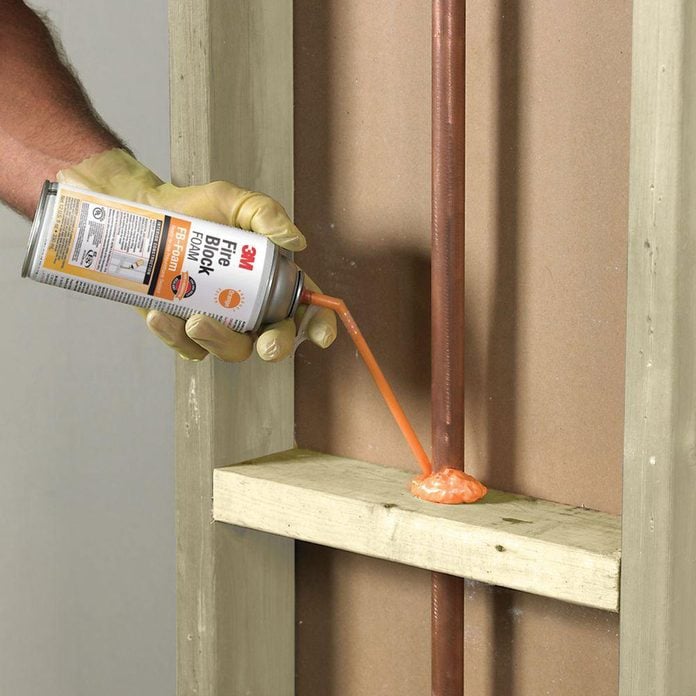
Seal Electrical Outlets
Don’t put away your foam sealant supplies just yet. It wouldn’t be a bad idea to use it on your exterior-wall electrical outlets, too.
For this application you’ll need a slightly different product, but the idea is basically the same. The cracks around those outlets can let in a lot of cold air, so filling them with foam insulation will block that air and help keep your home more comfortable. If you’ve never tackled a project like this before, here’s a quick primer on outlet insulation.
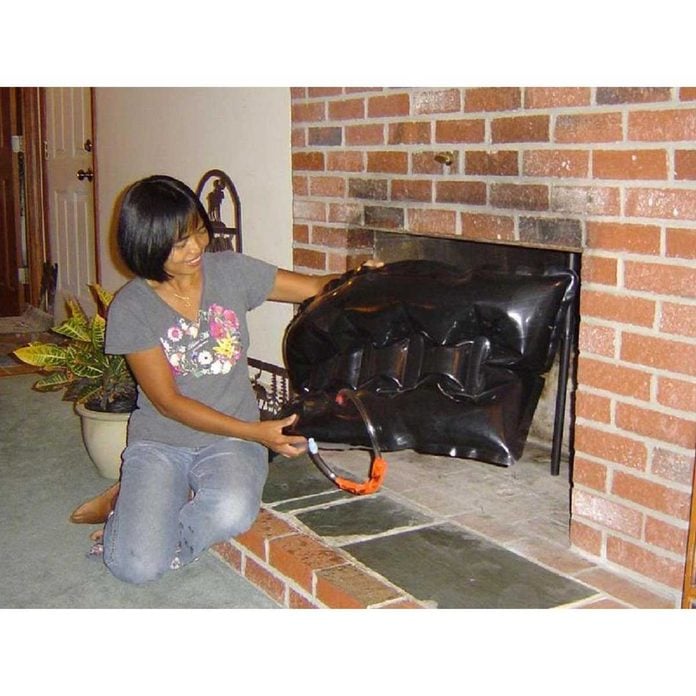
Plug Your Chimney Flue
As much as we love the ambiance, fireplaces are some of the worst offenders at allowing chilly air into your home. This is all thanks to the flue, which provides an easy entry point for cold air.
While there are lots of ways to winterize your fireplace, one quick fix is to use a chimney plug. That’s a polyurethane “pillow,” ideally on a telescoping pole, that can be used on-demand to block the flue. The one caveat: You must remove the plug before you light a fire; not doing so is a significant fire hazard.
